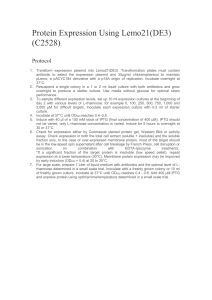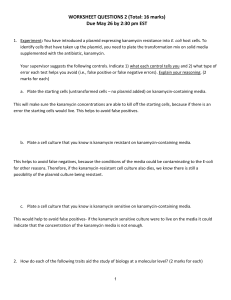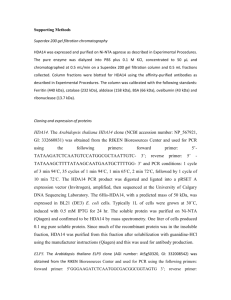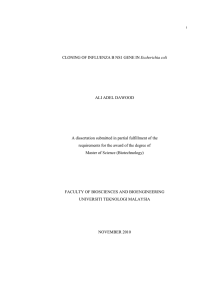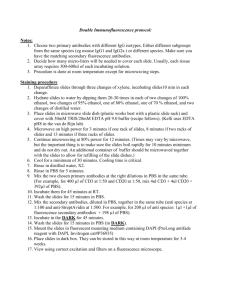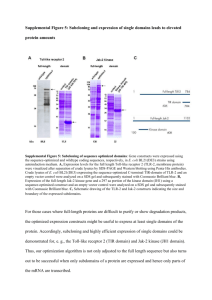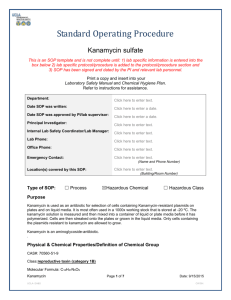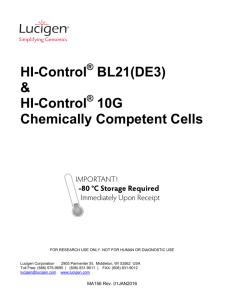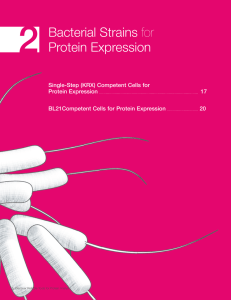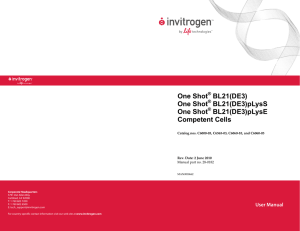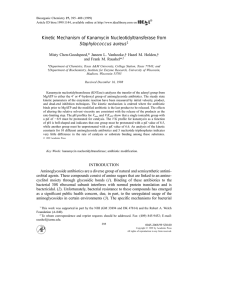Experimental details for the plasmid construction, and the
advertisement
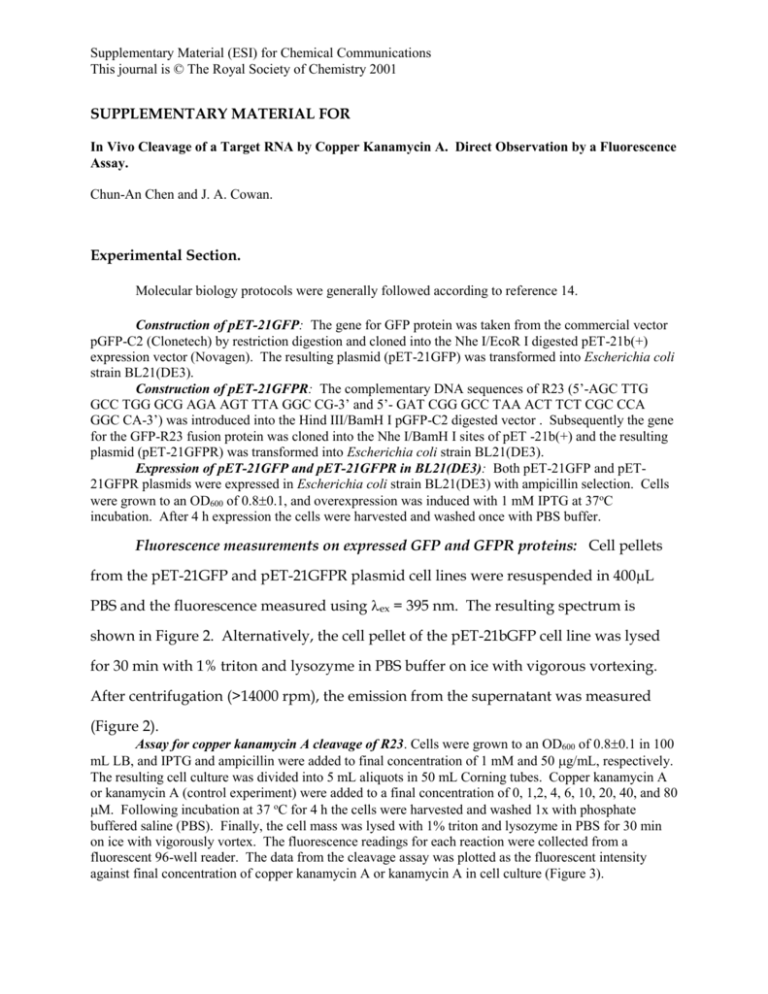
Supplementary Material (ESI) for Chemical Communications This journal is © The Royal Society of Chemistry 2001 SUPPLEMENTARY MATERIAL FOR In Vivo Cleavage of a Target RNA by Copper Kanamycin A. Direct Observation by a Fluorescence Assay. Chun-An Chen and J. A. Cowan. Experimental Section. Molecular biology protocols were generally followed according to reference 14. Construction of pET-21GFP: The gene for GFP protein was taken from the commercial vector pGFP-C2 (Clonetech) by restriction digestion and cloned into the Nhe I/EcoR I digested pET-21b(+) expression vector (Novagen). The resulting plasmid (pET-21GFP) was transformed into Escherichia coli strain BL21(DE3). Construction of pET-21GFPR: The complementary DNA sequences of R23 (5’-AGC TTG GCC TGG GCG AGA AGT TTA GGC CG-3’ and 5’- GAT CGG GCC TAA ACT TCT CGC CCA GGC CA-3’) was introduced into the Hind III/BamH I pGFP-C2 digested vector . Subsequently the gene for the GFP-R23 fusion protein was cloned into the Nhe I/BamH I sites of pET -21b(+) and the resulting plasmid (pET-21GFPR) was transformed into Escherichia coli strain BL21(DE3). Expression of pET-21GFP and pET-21GFPR in BL21(DE3): Both pET-21GFP and pET21GFPR plasmids were expressed in Escherichia coli strain BL21(DE3) with ampicillin selection. Cells were grown to an OD600 of 0.80.1, and overexpression was induced with 1 mM IPTG at 37oC incubation. After 4 h expression the cells were harvested and washed once with PBS buffer. Fluorescence measurements on expressed GFP and GFPR proteins: Cell pellets from the pET-21GFP and pET-21GFPR plasmid cell lines were resuspended in 400L PBS and the fluorescence measured using ex = 395 nm. The resulting spectrum is shown in Figure 2. Alternatively, the cell pellet of the pET-21bGFP cell line was lysed for 30 min with 1% triton and lysozyme in PBS buffer on ice with vigorous vortexing. After centrifugation (>14000 rpm), the emission from the supernatant was measured (Figure 2). Assay for copper kanamycin A cleavage of R23. Cells were grown to an OD600 of 0.80.1 in 100 mL LB, and IPTG and ampicillin were added to final concentration of 1 mM and 50 g/mL, respectively. The resulting cell culture was divided into 5 mL aliquots in 50 mL Corning tubes. Copper kanamycin A or kanamycin A (control experiment) were added to a final concentration of 0, 1,2, 4, 6, 10, 20, 40, and 80 M. Following incubation at 37 oC for 4 h the cells were harvested and washed 1x with phosphate buffered saline (PBS). Finally, the cell mass was lysed with 1% triton and lysozyme in PBS for 30 min on ice with vigorously vortex. The fluorescence readings for each reaction were collected from a fluorescent 96-well reader. The data from the cleavage assay was plotted as the fluorescent intensity against final concentration of copper kanamycin A or kanamycin A in cell culture (Figure 3). 2
